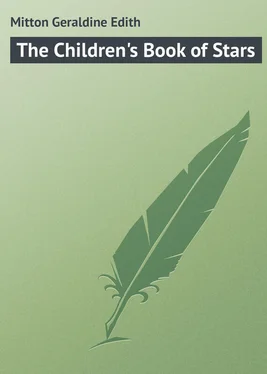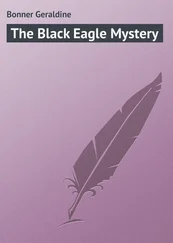Geraldine Mitton - The Children's Book of Stars
Здесь есть возможность читать онлайн «Geraldine Mitton - The Children's Book of Stars» — ознакомительный отрывок электронной книги совершенно бесплатно, а после прочтения отрывка купить полную версию. В некоторых случаях можно слушать аудио, скачать через торрент в формате fb2 и присутствует краткое содержание. Издательство: Иностранный паблик, Жанр: foreign_prose, foreign_children, foreign_language, на английском языке. Описание произведения, (предисловие) а так же отзывы посетителей доступны на портале библиотеки ЛибКат.
- Название:The Children's Book of Stars
- Автор:
- Издательство:Иностранный паблик
- Жанр:
- Год:неизвестен
- ISBN:нет данных
- Рейтинг книги:5 / 5. Голосов: 1
-
Избранное:Добавить в избранное
- Отзывы:
-
Ваша оценка:
- 100
- 1
- 2
- 3
- 4
- 5
The Children's Book of Stars: краткое содержание, описание и аннотация
Предлагаем к чтению аннотацию, описание, краткое содержание или предисловие (зависит от того, что написал сам автор книги «The Children's Book of Stars»). Если вы не нашли необходимую информацию о книге — напишите в комментариях, мы постараемся отыскать её.
The Children's Book of Stars — читать онлайн ознакомительный отрывок
Ниже представлен текст книги, разбитый по страницам. Система сохранения места последней прочитанной страницы, позволяет с удобством читать онлайн бесплатно книгу «The Children's Book of Stars», без необходимости каждый раз заново искать на чём Вы остановились. Поставьте закладку, и сможете в любой момент перейти на страницу, на которой закончили чтение.
Интервал:
Закладка:
Besides giving us light by night, the moon serves other important purposes, and the most important of all is the raising of the tides. Without the rising of the sea twice in every day and night our coasts would become foul and unwholesome, for all the dead fish and rotting stuff lying on the beach would poison the air. The sea tides scour our coasts day by day with never-ceasing energy, and they send a great breath of freshness up our large rivers to delight many people far inland. The moon does most of this work, though she is a little helped by the sun. The reason of this is that the moon is so near to the earth that, though her pull is a comparatively small one, it is very strongly felt. She cannot displace the actual surface to any great extent, as it is so solid; but when it comes to the water she can and does displace that, so that the water rises up in answer to her pull, and as the earth turns round the raised-up water lags behind, reaching backward toward the moon, and is drawn up on the beach, and makes high tide. But it is stopped there, and meantime, by reason of the earth's movement, the moon is left far behind, and pulls the water to itself further on, when the first high tide relapses and falls down again. At length the moon gets round to quite the opposite side of the earth to that where she began, and there she makes a high tide too; but as she draws the water to herself she draws also the solid earth beneath the water to her in some degree, and so pulls it away from the place where the first high tide occurred, leaving the water there deeper than before, and so causing a secondary high tide.
The sun has some influence on the tides too, and when moon and sun are in the same line, as at full and new moon, then the tides are highest, and are called spring tides; but when they pull in different directions, as when it is half-moon, then the tides are lowest and are called neap tides.
CHAPTER IV
THE EARTH'S BROTHERS AND SISTER
The earth is not the only world that, poised in space, swings around the sun. It is one of a family called the Solar System, which means the system controlled and governed by the sun. When we look up at the glorious sky, star-studded night by night, it might seem to us that the stars move only by reason of the earth's rotation; but when men first began to study the heavens attentively – and this is so long ago that the record of it is not to be found – they noticed that, while every shining object in the sky was apparently moving round us, there were a few which also had another movement, a proper motion of their own, like the moon. These curious stars, which appeared to wander about among the other stars, they called planets, or wanderers. And the reason, which was presently discovered, of our being able to see these movements was that these planets are very much nearer to us than any of the real stars, and in fact form part of our own solar system, while the stars are at immeasurable distances away. Of all the objects in the heavens the planets are the most intensely interesting to us; for though removed from us by millions of miles, the far-reaching telescope brings some of them within such range that we can see their surfaces and discover their movements in a way quite impossible with the stars. And here, if anywhere, might we expect to find traces of other living beings like ourselves; for, after all the earth is but a planet, not a very large nor a very small one, and in no very striking position compared with the other planets; and thus, arguing by what seems common-sense, we say, If this one planet has living beings on its surface, may not the other planets prove to be homes for living beings also? Counting our own earth, there are eight of these worlds in our solar system, and also a number of tiny planets, called asteroids; these likewise go round the sun, but are very much smaller than any of the first eight, and stand in a class by themselves, so that when the planets are mentioned it is generally the eight large well-known planets which are referred to.
If we go back for a moment to the illustration of the large lamp representing our sun, we shall now be able to fill in the picture with much more detail. The orbits of the planets, as their paths round the sun are called, lie like great circles one outside another at various distances, and do not touch or cut each other. Where do you suppose our own place to be? Will it be the nearest to the sun or the furthest away from him? As a matter of fact, it is neither, we come third in order from the sun, for two smaller planets, one very small and the other nearly as large as the earth, circle round and round the sun in orbits lying inside ours. Now if we want to place objects around our lamp-sun which will represent these planets in size, and to put them in places corresponding to their real positions, we should find no room large enough to give us the space we ought to have. We must take the lamp out into a great open field, where we shall not be limited by walls. Then the smallest planet, named Mercury, which lies nearest of all to the sun, would have to be represented by a pea comparatively close to the sun; Venus, the next, would be a greengage plum, and would be about twice as far away; then would come the earth, a slightly larger plum, about half as far again as Venus. After this there would be a lesser planet, called Mars, like a marble. These are the first four, all comparatively small; beyond them there is a vast gap, in which we find the asteroids, and after this we come to four larger planets, mighty indeed as regards ourselves, for if our earth were a greengage plum, the first of these, Jupiter, would have to be the size of a football at least, and the next, Saturn, a smaller football, while Uranus and Neptune, the two furthest out, would be about the size of the toy balloons children play with. The outermost one, Neptune, would be thirty times as far from the sun as we are.
This is the solar system, and in it the only thing that shines by its own light is the sun; all the rest, the planets and their moons, shine only because the rays of light from the sun strike on their surfaces and are reflected off again. Our earth shines like that, and from the nearer planets must appear as a brilliant star. The little solar system is separated by distances beyond the realm of thought from the rest of the universe. Vast as are the intervals between ourselves and our planetary neighbours, they are as nothing to the space that separates us from the nearest of the steady shining fixed stars. Why, removed as far from us as the stars, the sun himself would have sunk to a point of light; and as for the planets, the largest of them, Jupiter, could not possibly be seen. Thus, when we look at those stars across the great gulf of space, we know that though we see them they cannot see us, and that to them our sun must seem only a star; consequently we argue that perhaps these stars themselves are suns with families of planets attached to them; and though there are reasons for thinking that this is not the case with all, it may be with some. Now if, after learning this, we look again at the sky, we do so with very different eyes, for we realize that some of these shining bodies are like ourselves in many things, and are shining only with a light borrowed from the sun, while others are mighty glowing suns themselves, shining by their own light, some greater and brighter, some less than our sun. The next thing to do is to learn which are stars and which are planets.
Of the planets you will soon learn to pick out one or two, and will recognize them even if they do change their places – for instance, Venus is at times very conspicuous, shining as an evening star in the west soon after the sun goes down, or us a morning star before he gets up, though you are not so likely to see her then; anyway, she is never found very far from the sun. Jupiter is the only other planet that compares with her in brilliancy, and he shines most beautifully. He is, of course, much further away from us than Venus, but so much larger that he rivals her in brightness. Saturn can be quite easily seen as a conspicuous object, too, if you know where to look for him, and Mars is sometimes very bright with a reddish glow. The others you would not be able to distinguish.
Читать дальшеИнтервал:
Закладка:
Похожие книги на «The Children's Book of Stars»
Представляем Вашему вниманию похожие книги на «The Children's Book of Stars» списком для выбора. Мы отобрали схожую по названию и смыслу литературу в надежде предоставить читателям больше вариантов отыскать новые, интересные, ещё непрочитанные произведения.
Обсуждение, отзывы о книге «The Children's Book of Stars» и просто собственные мнения читателей. Оставьте ваши комментарии, напишите, что Вы думаете о произведении, его смысле или главных героях. Укажите что конкретно понравилось, а что нет, и почему Вы так считаете.












